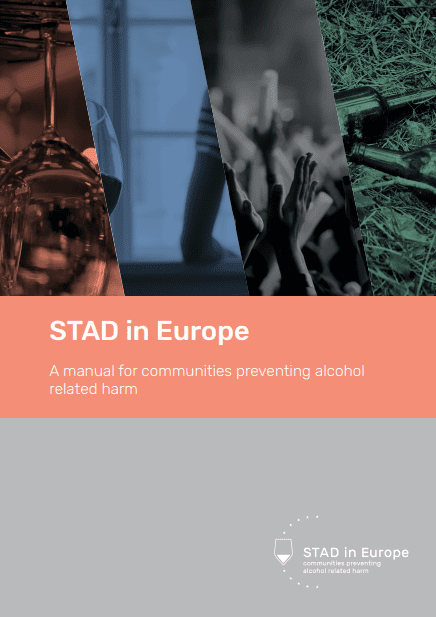STAD: New Prevention Manual Launched
 STAD in Europe (SiE) has launched their prevention manual which includes a roadmap for the implementation of the STAD method in different European countries, including the lessons learned from SiE.
STAD in Europe (SiE) has launched their prevention manual which includes a roadmap for the implementation of the STAD method in different European countries, including the lessons learned from SiE.
European collaboration
SiE took off in 2016 aiming to develop more knowledge on effective strategies to reduce binge alcohol use by limiting the availability of alcohol. SiE is a European collaboration of 7 countries – funded by the European Commission.
SiE guide
SiE is based and inspired on the STAD programme in Stockholm that started in 1995 and that successfully reduced alcohol related problems in nightlife by focusing on the improvement of the compliance with alcohol legislation regarding over-serving and age limits.
The main deliverable of the project is the SiE intervention manual, suitable as a guide for developing interventions to reduce the availability of alcohol in order to tackle youngsters’ heavy episodic alcohol consumption. SiE launched their manual as the final product of a 3 year cooperation of 7 EU countries that have been implementing and adapting the STAD programme in their local settings. The countries are: Czech Republic, Germany, The Netherlands, Slovenia, Spain, Sweden and the United Kingdom.
The manual includes practical frameworks for presentations on the approach that could be used in the community and ready-to-use communication materials. The guide has taken the differences in contextual factors between countries in, for instance, Northern, Southern, or Eastern regions of Europe and includes region specific tips for implementation in different settings. This information has been gathered during the development and implementation of the pilot model in seven EU Member State countries. Therefore, the model should allow for a seamless match in a local community.